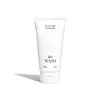What's inside
What's inside
 Key Ingredients
Key Ingredients

No key ingredients
 Benefits
Benefits

 Concerns
Concerns

No concerns
 Ingredients Side-by-side
Ingredients Side-by-side

Water
Skin ConditioningCocamidopropyl Hydroxysultaine
CleansingCoco-Glucoside
CleansingErythritol
HumectantAloe Barbadensis Leaf Juice
Skin ConditioningCocamidopropyl Betaine
CleansingAlbatrellus Confluens Extract
HumectantCetearyl Olivate
Sorbitan Olivate
EmulsifyingLactobacillus Ferment
Skin ConditioningSodium Cocoyl Isethionate
CleansingGlycerin
HumectantVetiveria Zizanoides Root Extract
PerfumingCocoyl Proline
Skin ConditioningLactic Acid
BufferingInulin
Skin ConditioningAlpha-Glucan Oligosaccharide
CleansingMaltodextrin
AbsorbentCaprylyl Glycol
EmollientGlyceryl Caprylate
EmollientPhenylpropanol
MaskingPotassium Sorbate
PreservativeSodium Lactate
BufferingSodium Phytate
Water, Cocamidopropyl Hydroxysultaine, Coco-Glucoside, Erythritol, Aloe Barbadensis Leaf Juice, Cocamidopropyl Betaine, Albatrellus Confluens Extract, Cetearyl Olivate, Sorbitan Olivate, Lactobacillus Ferment, Sodium Cocoyl Isethionate, Glycerin, Vetiveria Zizanoides Root Extract, Cocoyl Proline, Lactic Acid, Inulin, Alpha-Glucan Oligosaccharide, Maltodextrin, Caprylyl Glycol, Glyceryl Caprylate, Phenylpropanol, Potassium Sorbate, Sodium Lactate, Sodium Phytate
Ingredients Explained
These ingredients are found in both products.
Ingredients higher up in an ingredient list are typically present in a larger amount.
Aloe Barbadensis Leaf Juice comes from leaves of the aloe plant. Aloe Barbadensis Leaf Juice is best known for helping to soothe sunburns. It is also anti-inflammatory, moisturizing, antiseptic, and can help heal wounds.
Aloe is packed with good stuff including Vitamins A, C, and E. These vitamins are antioxidants, which help fight free-radicals and the damage they may cause. Free-radicals are molecules that may damage your skin cells, such as pollution.
Aloe Barbadensis Leaf Juice also contains sugars. These sugars come in the form of monosaccharides and polysaccharides, folic acid, and choline. These sugars are able to help bind moisture to skin.
It also contains minerals such as calcium, 12 anthraquinones, fatty acids, amino acids, and Vitamin B12.
Learn more about Aloe Barbadensis Leaf JuiceCaprylyl Glycol is a humectant and emollient, meaning it attracts and preserves moisture.
It is a common ingredient in many products, especially those designed to hydrate skin. The primary benefits are retaining moisture, skin softening, and promoting a healthy skin barrier.
Though Caprylyl Glycol is an alcohol derived from fatty acids, it is not the kind that can dry out skin.
This ingredient is also used as a preservative to extend the life of products. It has slight antimicrobial properties.
Learn more about Caprylyl GlycolCoco-Glucoside is a surfactant, or a cleansing ingredient. It is made from glucose and coconut oil.
Surfactants help gather dirt, oil, and other pollutants from your skin to be rinsed away.
This ingredient is considered gentle and non-comedogenic. However, it may still be irritating for some.
Learn more about Coco-GlucosideGlycerin is already naturally found in your skin. It helps moisturize and protect your skin.
A study from 2016 found glycerin to be more effective as a humectant than AHAs and hyaluronic acid.
As a humectant, it helps the skin stay hydrated by pulling moisture to your skin. The low molecular weight of glycerin allows it to pull moisture into the deeper layers of your skin.
Hydrated skin improves your skin barrier; Your skin barrier helps protect against irritants and bacteria.
Glycerin has also been found to have antimicrobial and antiviral properties. Due to these properties, glycerin is often used in wound and burn treatments.
In cosmetics, glycerin is usually derived from plants such as soybean or palm. However, it can also be sourced from animals, such as tallow or animal fat.
This ingredient is organic, colorless, odorless, and non-toxic.
Glycerin is the name for this ingredient in American English. British English uses Glycerol/Glycerine.
Learn more about Glycerin